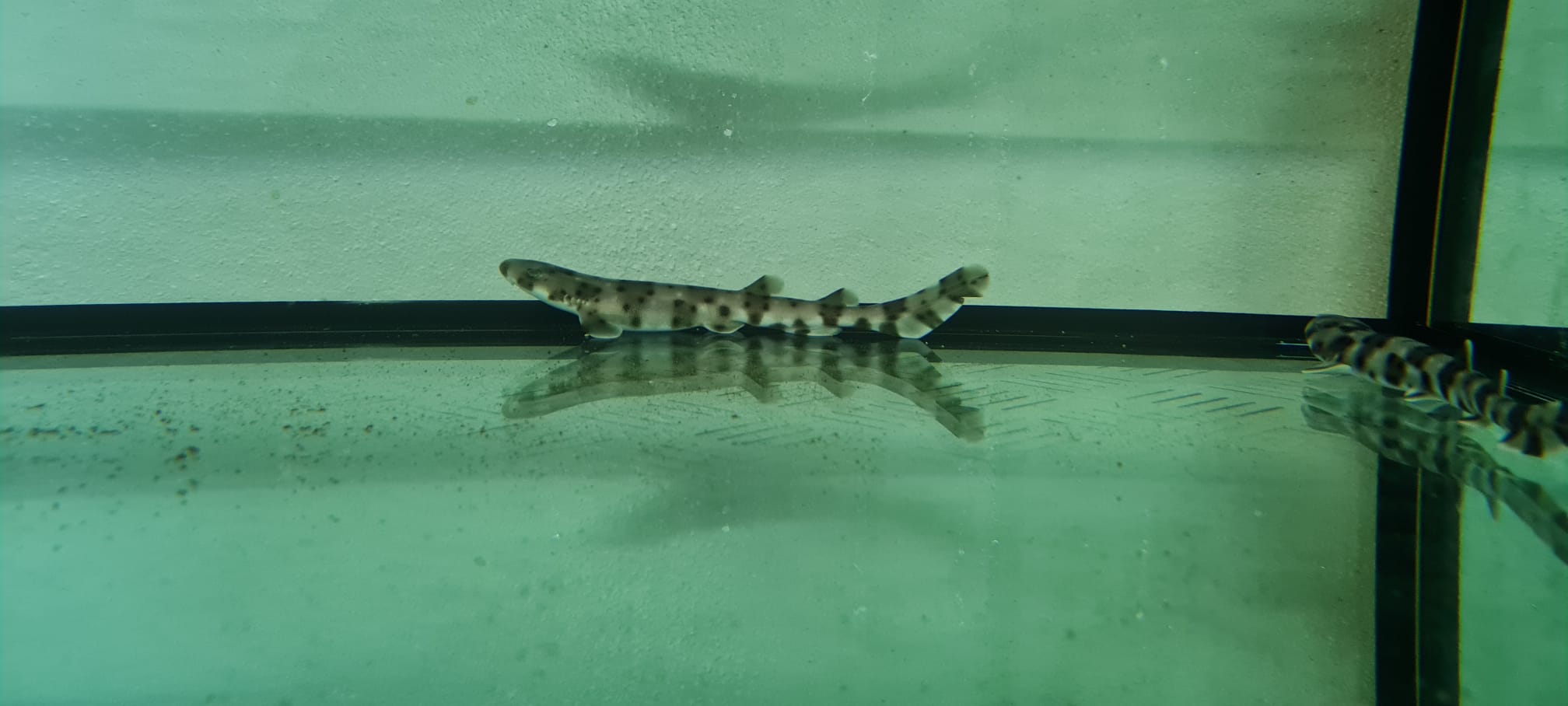More than 150 specimens of this endangered species have been born thanks to the initiative.
TDB keeps you informed. Follow us on Facebook, Twitter and Instagram.
The first alitanes born in captivity
This Thursday, the Councillor for the Environment and Territory, Miquel Mir, and the Councillor for Agriculture, Fisheries and Food, Mae de la Concha, took stock of the ‘Petits taurons’ project, which was launched two years ago by the two ministries and the organisations Save the Med, Palma Aquarium, Sharkmed, Mallorca Preservation Fund, Marilles and Iniciativa Pequeñas Islas Mediterráneas (PIM).
The first action of the project, called “Acción Stellaris”, focused on recovering alitan eggs from the marine environment to care for them in captivity and then release them into the wild to increase the population. Since the project began, 155 alitan have hatched in controlled breeding centres such as the aquariums of the Cabrera National Park and the facilities of the Palma Aquarium and the Marine and Aquaculture Research Laboratory (LIMIA).
Sixteen specimens have already been released in the waters of the Cabrera National Park once they have reached a weight of around 800 grams and an approximate size of 75 centimetres. The alitanes have been released near the Moreau Fort, an extension of deep coral reef that was protected in its entirety following the extension of the national park in 2019. Four more will be released in the Isla del Toro marine reserve.
Mir said he was “very satisfied with the results of a project that once again positions the Balearic Islands as a leader in the conservation of the marine environment, this time through the recovery of one of its most valuable treasures: biodiversity”. In this regard, the councillor highlighted “the impetus that has been given this term of office to the Cabrera Interpretation Centre as a space for the recovery of fauna and environmental education”.
De la Concha, for his part, said that “it is exciting to see projects like this succeed, in which different parties collaborate, such as the Government, conservation organisations and fishermen, with a common goal, in this case, to conserve our seabed. This is the way forward”.
Through a small abdominal surgery performed by LIMIA and IMEDEA, transmitters have been placed in the sharks that will be released, and these will broadcast information about their location for six years. The signal will be picked up by a system of receivers installed in a half-kilometre square at a depth of 70 metres, where the species usually lives. This system is the first to track deep-sea species and will become part of the Balearic Tracking Network, managed by IMEDEA.
In addition, the sharks also carry an external tag that allows them to be identified in case of capture. For this reason, the promoters of the project have the support of the fishermen’s guilds, who have been asked to inform the Species Protection Service of the tag number, weight and place where the shark was caught.
Currently, 116 eggs are still incubating in the facilities where they will continue their hatching under the supervision of the technicians. If the methodology works, the intention is to repeat the process for other species of endangered sharks and rays in the Balearic Islands.
The alitan is present in the waters of the Balearic Islands, especially in the Maritime-Terrestrial National Park of Cabrera, Formentera and the Menorca Channel. Although it used to be an abundant species, it is listed as endangered in the Red Book of the fish of the Balearic Islands.
